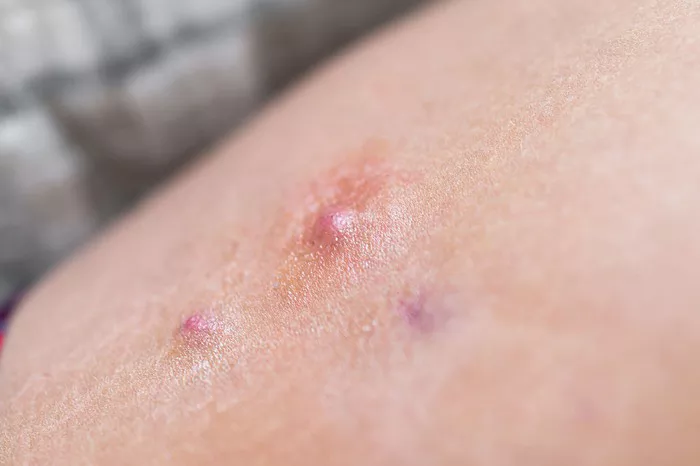Vitiligo is a skin condition characterized by the loss of pigment-producing cells (melanocytes), leading to white patches on the skin. One distinct type of vitiligo is segmental vitiligo, which differs from other forms in its distribution and behavior. A common question among those diagnosed with this condition is whether segmental vitiligo spreads beyond its initial onset. To address this concern, it’s essential to explore the nature of segmental vitiligo, its potential progression, and the factors that influence its spread.
What is Segmental Vitiligo?
Segmental vitiligo, also known as unilateral or localized vitiligo, is a subtype of vitiligo that typically appears earlier in life compared to other forms. Unlike generalized vitiligo, which can affect various parts of the body symmetrically, segmental vitiligo tends to be unilateral, affecting one side or segment of the body. The patches associated with segmental vitiligo often follow a dermatomal pattern, reflecting the areas of skin supplied by specific nerves.
Understanding the Pathophysiology
The underlying mechanisms of vitiligo, including segmental vitiligo, are complex and not yet fully understood. It is widely believed to involve autoimmune processes where the body’s immune system mistakenly targets and destroys melanocytes. In segmental vitiligo, this attack is often localized to a specific area or segment of the body.
Recent studies have also highlighted the potential role of genetic factors in predisposing individuals to segmental vitiligo. Specific genetic variations may increase susceptibility to autoimmune reactions against melanocytes, leading to the characteristic depigmentation seen in segmental vitiligo.
Does Segmental Vitiligo Spread?
One of the defining characteristics of segmental vitiligo is its typically stable nature. Unlike other types of vitiligo, segmental vitiligo often remains confined to its initial segment without spreading extensively to other areas of the body. Research suggests that segmental vitiligo is less likely to spread beyond its original boundaries compared to generalized vitiligo.
However, it’s essential to note that segmental vitiligo can still exhibit some degree of progression in certain cases. The progression of segmental vitiligo is generally slower and more limited compared to other types of vitiligo. Factors such as stress, hormonal changes, and inflammation may contribute to occasional expansion of depigmented patches in segmental vitiligo.
Factors Influencing Progression
Several factors can influence the progression or stability of segmental vitiligo:
1. Location of Initial Onset: The location of the first appearance of segmental vitiligo can impact its subsequent progression. Patches that develop in certain areas, such as the face, hands, or feet, may be more noticeable and subject to external influences that can affect their spread.
2. Age at Onset: Segmental vitiligo often begins in childhood or adolescence. In some cases, the condition may stabilize or even resolve with age, particularly if it remains localized and does not spread significantly.
3. Immune Response: The immune system’s activity plays a crucial role in the development and progression of vitiligo. Immune-modulating therapies may help stabilize segmental vitiligo by controlling autoimmune processes.
4. Hormonal Changes: Fluctuations in hormone levels, particularly during puberty or pregnancy, can sometimes trigger changes in segmental vitiligo. However, not all individuals with segmental vitiligo experience progression during these periods.
Treatment and Management
Managing segmental vitiligo focuses primarily on stabilizing existing patches and preventing further spread. Treatment options may include:
1. Topical Therapies: Corticosteroid creams or topical calcineurin inhibitors can help repigment affected areas by reducing inflammation and encouraging melanocyte function.
2. Phototherapy: Light-based therapies such as narrowband UVB or excimer laser can stimulate repigmentation in segmental vitiligo patches.
3. Surgical Interventions: Techniques like autologous melanocyte transplantation or blister grafting may be considered for stable and localized segmental vitiligo.
4. Immunomodulatory Therapy: Oral or injectable medications that modify immune responses may be prescribed in cases of progressive segmental vitiligo.
Conclusion
Segmental vitiligo, characterized by its unilateral and often stable nature, generally does not spread extensively beyond its initial onset. While the condition can occasionally progress under certain circumstances, the risk of widespread depigmentation is lower compared to generalized vitiligo. Understanding the factors influencing the progression of segmental vitiligo is crucial for developing effective treatment strategies aimed at stabilizing existing patches and improving quality of life for affected individuals. Ongoing research into the pathophysiology of vitiligo holds promise for advancing our understanding and enhancing treatment options for segmental vitiligo and other forms of this complex skin condition.
Related Topics:

























